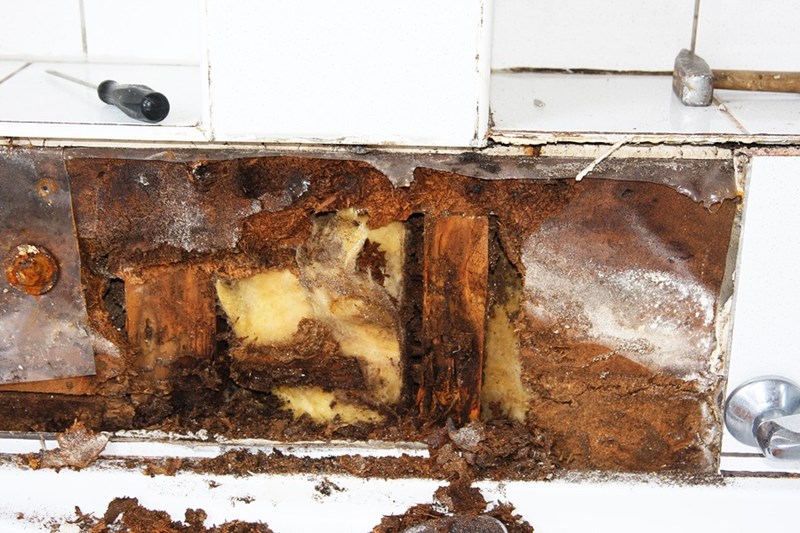Bathroom Water Damage - Ways To Avoid This Happening
Bathroom Water Damage - Ways To Avoid This Happening
Blog Article
Just how do you really feel when it comes to How to Prevent Bathroom Water Damage?

The restroom is incredibly prone for damp buildup and also possible water damages as a result of the constant use water in it. This write-up supplies basic inspection techniques to aid spotting water damage dangers.
The constant use of water in the restroom makes it very vulnerable for moist build-up as well as possible water damages. By inspecting it routinely, you can minimize water relevant problems.
The adhering to set of inspections is very easy to perform and should be done once in every three months in order to maintain your shower room healthy as well as to avoid prospective water damages caused by the bathtub, the shower, pipe joints and also plumbing, sinks, closets, and also the commode
Do not disregard doing these assessments and also be thorough while performing them. Keep in mind that these simple inspections can save you a lot of cash by giving very early signs for water damages
Bath tub and also Shower
The shower and also tub need special interest and maintenance. Check the tiles and also change if split. Make certain that there is no missing out on grout between the tiles. Evaluate and also change split caulking at joints where the walls satisfy the floor or the bathtub. Clogged drains pipes and also pipelines problems will prevent the bath tub from drying out as well as may show significant issues below the bathtub. Seek advice from a specialist right away to prevent architectural damages. Take note of discolorations or soft locations around the tub walls as they may show an interior leak.
Plumbing
Signs for water damages are difficult to spot since the majority of pipes are mounted inside the wall surfaces.
Pay special focus to floor covering and wall surfaces wetness and discolorations as they may indicate an unseen plumbing issue. Check wetness levels in adjacent spaces as well.
Sinks as well as Cabinets
Sinks and closets are subjected to dampness as well as humidity day-to-day and are usually neglected. Evaluate on a regular basis under the sink and on the kitchen counter above it. Fix any type of drip in the catch as it may recommend drain troubles. Check out the sink, slow draining pipelines might indicate an obstructed drainpipe. Replace sink seals if they are fractured or loose.
The Commode
The toilet is a vulnerable water joint. Check the water lines as well as search for leaks around the toilet seat, in the pipe, and under the water storage tank. If you identify any type of indicators of moisture on the flooring around the commode, look for leaks in the toilet rim and also tank seals.
Know that hanging commode bowl antiperspirants increases the possibilities for obstructions.
10 TIPS TO PREVENT WATER DAMAGE IN THE BATHROOM
The average household uses approximately 80-100 gallons of water per person per day. For a family of 4, that's almost 2,500 gallons of water a week! The largest portion of this consumption comes from bathroom use. Flushing the toilet uses the most water, followed by taking a shower or bath. With that much water running through the home, water damage in the bathroom is bound to happen. Knowing how to spot signs of a water leak is essential to preventing long-term damage. This guide provides you with tips to reduce the impact of water damage on your bathroom.
CAUSES OF BATHROOM WATER DAMAGE
Pipe breaks are the most common cause of water damage we see in our daily jobs. The age of a pipe plays a large role in a pipe break as well as corrosion. Over time, the metal begins to break down, allowing water to escape. Frozen pipe breaks are also a concern in the winter months. Toilet overflows caused by paper products or children flushing inappropriate items. Degraded caulking around the toilet or bathtub can allow water seepage, sometimes behind the fixture, into the subfloor or walls. Condensation forms when the water in a pipe is cooler than the air temperature. Beads of water form on the exterior of the pipes, sometimes so much so that the water begins to drip and pool below. Sink or shower backups created by poor drainage. HOW TO PREVENT WATER DAMAGE IN YOUR BATHROOM
Inspect your toilet supply line for worn or frayed hoses and replace them as needed. Winterize your plumbing to prevent a frozen pipe break. Use vent fans to prevent condensation that can lead to mold growth. Routinely check and replace degraded caulking around your toilet or bathtub. Increase the temperature in your toilet tank and insulate your pipes during the warm summer months to keep condensation from forming. Use child safety locks on the toilets. Flush only toilet paper. "Flushable" wet wipes are actually not good for your plumbing system. Additionally, feminine hygiene products should not be flushed. Prevent water from escaping the tub or shower. Make sure shower curtains are in good condition. Inspect shower doors and replace the seal strip if necessary. Wipe up any water that accumulates on the floor and use bath mats. Water left to sit can cause damage to the tiles and flooring. Refrain from using bath products containing heavy oils to avoid a clogged drain.

I have been very eager about Looking for Signs of Water Damage in the Bathroom and I'm hoping you enjoyed reading the new blog posting. Liked our blog entry? Please share it. Let somebody else locate it. I appreciate reading our article about Common Causes of Water Damage in a Bathroom.
Recurring Service Plans Report this page